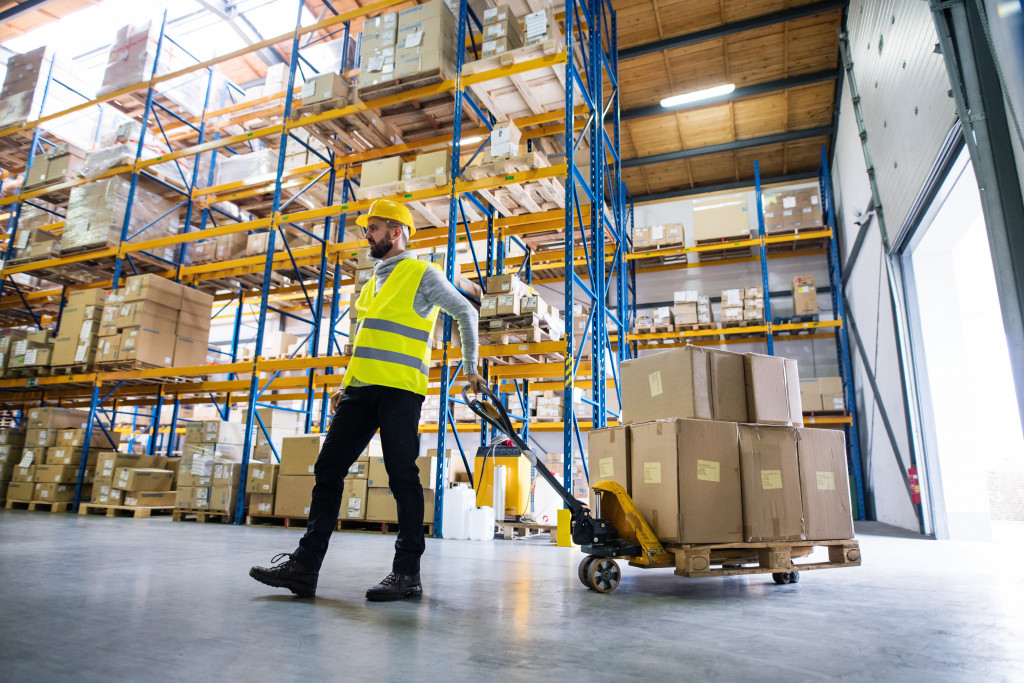The warehouse is the busiest part of every business. Supplies are coming in. Shipments are coming out. People are walking and running about, bumping into each other on their way to whichever aisle they need to pull an item from. It’s chaos when you don’t take control of it. That’s why accidents happen a lot of times in the warehouse. Aside from construction and mining, warehouse jobs represent a high rate of physical injuries that render people incapacitated for the rest of their lives.
It is for this reason that the law requires employers to utilize warehouse safety guidelines. From the wearing of personal protective equipment (PPE) to the proper handling of warehouse equipment, employers must ensure that everyone in the facility is safe from harm. They are liable for whatever happens in the warehouse, whether it’s within their control or not.
Build with the Right Materials
You’re probably renting the warehouse facility, right? Well, you still have control over whether to rent it or not despite its flaws and shortcomings. Should you rent a facility that did not use the right materials for the walls, flooring, shelves, etc.? One of the most important considerations you need to make is the flooring of the warehouse. What is it made of? Are you sure you want to rent a warehouse with tiled floors? Wouldn’t you break all of those in a week?
Warehouses should have an epoxy floor coating. This will keep the floor slip-resistant, shock-resistant, and less abrasive compared to concrete floors. Epoxy floors also last for more than 20 years at times, so it’s safe to say you won’t have a problem with your security deposit.
Ensure Vehicle Safety and Equipment Operation
Do you know that forklifts caused about 95,000 injuries and 100 fatalities annually? The warehouse operates heavy equipment all the time. It’s the simple things that make a difference between life and death. The simple act of turning the engine off when you need to go down “for a while” can save somebody else’s life. Because of familiarity and overconfidence, warehouse workers let safety measures slip, not knowing that one neglectful act can lead to a family losing a loved one.
Make sure that your employees understand this clearly. Impost strict disciplinary measures whenever someone does not follow the protocols. You also need to ensure that the vehicles are maintained according to the manufacturer’s instructions. Keeping them well-maintained is your responsibility.

Avoid Poor Racking and Shelving
Poorly built and broken shelves can be hazardous. You need to make sure that your employees are adequately trained to distribute the weight of the items on the whole shelf. Do they know how much weight it can take? Are they trained on how to arrange the boxes so that the weight is evenly distributed? Shelves topple and break without warning. If someone is walking or passing by, this will lead to a serious injury.
Wear Personal Protective Equipment (PPE)
Never let anyone enter the warehouse without wearing personal protective equipment such as gloves, goggles, hard hats, and steel-toed boots. Warehouse workers feel invincible at times, thinking that nothing can happen to them in a place they know, like the back of their hands. However, freak accidents happen in a blink of an eye. One moment you’re standing still and laughing with a co-worker. Then, the next thing you know, a shelf wobbled, and heavy equipment dropped on your head.
These things happen all the time. It’s a travesty not to think about the consequences of not wearing PPE. Ensure that your warehouse employees follow this rule by disciplining those who fail to do so. Once your employees see how serious you are about this rule, they will immediately follow.
Put Signage Up
It’s one thing for your employees to know what to do, but it’s another thing not to be sure they should do it or when they should do it or where they should do it. This is why signage around the warehouse is important. They tell the employees where the fire exit is and where to store the heavy equipment. Signs for vehicles and pedestrian traffic are, of course, critical to the safety of everyone working there.
You can avoid accidents and injuries in the warehouse when you follow these guidelines. Businesses are often caught up with many things such as marketing, advertising, and public relations that they forget all about the other component that keeps their business rolling—the warehouse. The safety of the warehouse and the employees is equivalent to the safety of the business.
